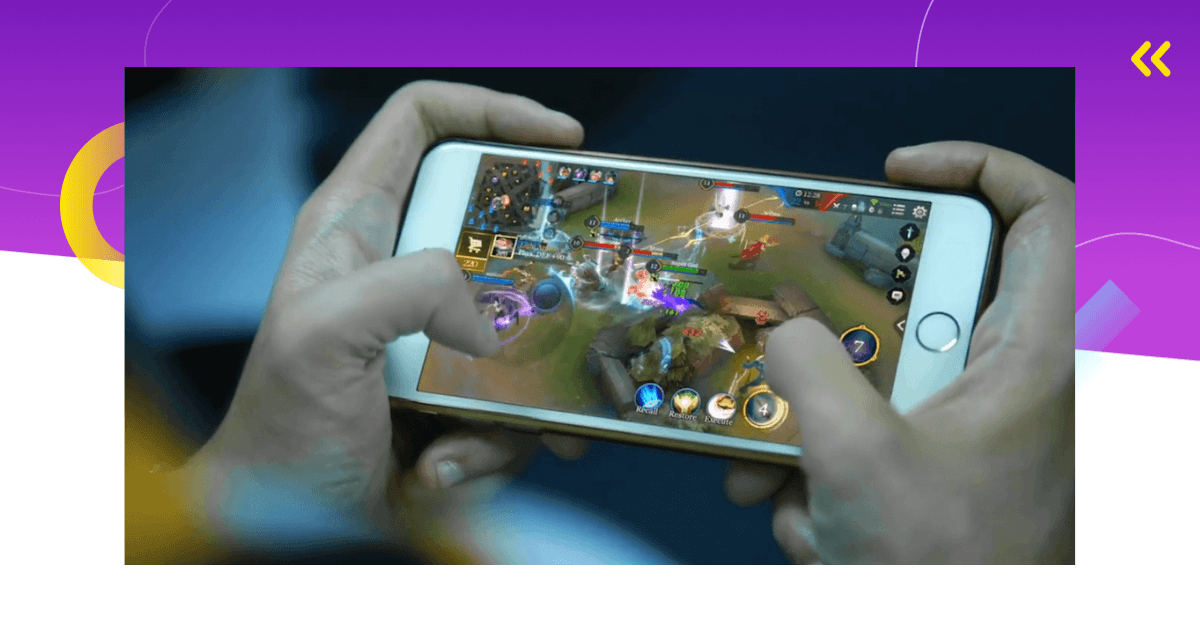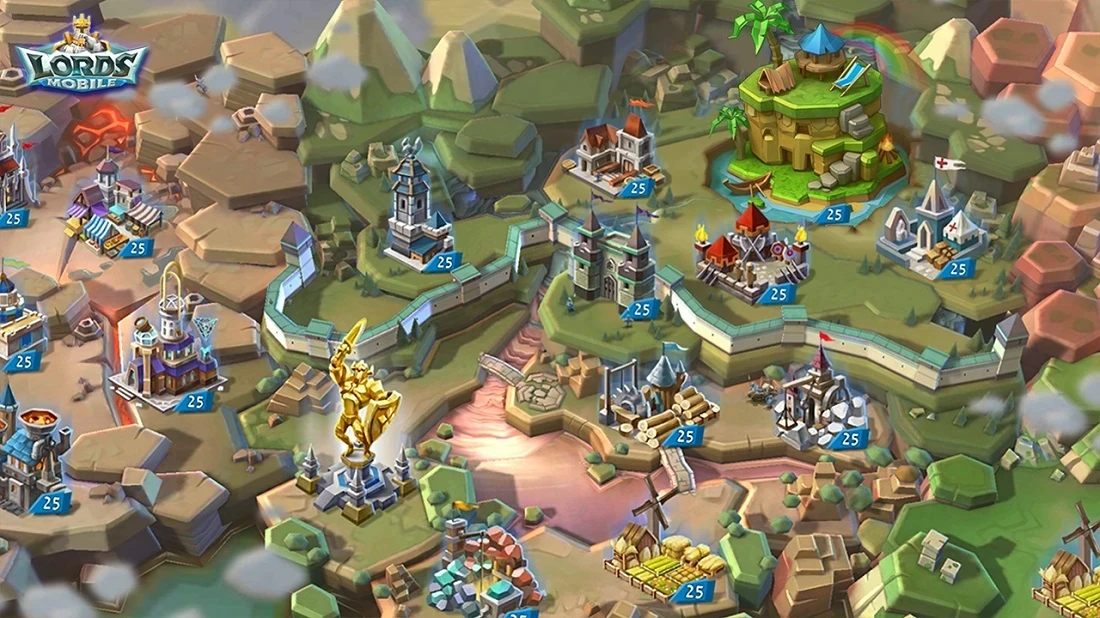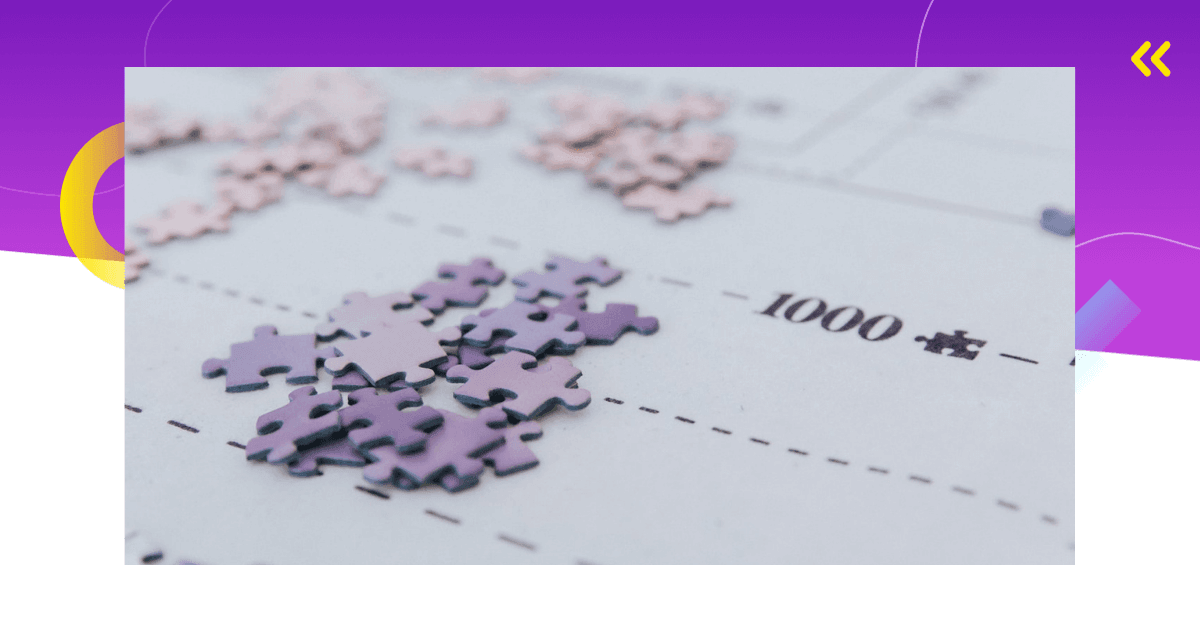(This is a guest post by Michael Moran, Head of Marketing at UserWise.)
Here’s what we know – the games marketplace has never been more crowded than it is right now. Every day, more than 3,000 new apps are added to the app store. In 2020, a record 80 billion mobile game apps were downloaded – and players spent a cool $100 billion on them. By 2023, there will be 3.07 billion (billion!) mobile game players, across the world looking for games to hold their attention.
Regardless of game type and audience, competition is thick. Players have all the power – and they’re expecting nothing short of excellence.
Yeah, having a strong game premise is crucial. And yeah, having the right resources behind you – money, skilled manpower, and marketplace familiarity – matters. But the truth is, neither of those factors comes close to touching the importance of LiveOps.
LiveOps is the present moment of mobile games, but also their future. And if you fail to equip yourself with the insight you need to orchestrate the strategy today, you will get left behind. So, we thought we’d give you a hand.
Enjoy our big-picture guide to LiveOps as you’ve never seen ‘em. Udonis, thanks for having us. We can’t wait to rock your readers’ world.
So, What Is LiveOps?
We’ll keep it simple.
LiveOps is the ongoing strategy you wield to make sure your game is as exciting, engaging, and profitable years from now as it is today. It’s the creation of new content, but never blindly. It’s the monetization tactics you exert, but never without tact.
It’s your cadence schedule, your analytic processes, and every action you take to update, personalize, and improve. It’s your North Star of staying relevant to your players.
But that doesn’t mean more equals better. LiveOps is a quality-over-quantity effort, meaning success is only determined by your ability to strategize.
Here are a few overarching tips to keep in mind before we get started.
Build a Team
Since LiveOps is all about strategy, having the right team makes all the difference. You don’t need the techiest people in the room – but you do need the most games-obsessed ones. Here are the core capabilities every LiveOps team should include: Community Manager, Game Design Analyst, and Producer.

Know the Basics
While updates, enhancements, and doses of new content are tried-and-true LiveOps, bug fixes, lag optimizations, and game economy tweaks are typically not. Set out on your journey knowing the many use cases of your LiveOps, and you’ll be better prepared to create them in ways that don’t require constant source code changes – saving you time and energy down the road.
Get Comfortable
LiveOps is not a box to check off. It’s not something you can set and forget, and it’s not something you can succeed at the first time around. What it is is a forever strategy – so treat it as a process that guides your operations, and it’ll help your game soar.
But we’ve still got one last thing to acquaint you with before we dive in – the LiveOps calendar. It is, for all intents and purposes, your new holy grail. It helps keep things organized and on track, and it helps your team – the one you’ve expertly selected – stay aligned as it moves forward.
Typically managed through spreadsheets, the LiveOps calendar is the cornerstone of your LiveOps. It keeps your plans, ideas, and expectations secure in one central place, and it ensures you’re not leaving any major real-world events, holidays, in-game affairs, or game-world special events out of your scheduling.
For now, just know – the calendar is the key to winning every aspect of LiveOps. So treat it with respect, and it’ll treat you well right back. Now you’re ready for the first big stop on our journey…

The Content
Welcome to the cornerstone of a successful LiveOps strategy – the output. The content, updates, and improvements that your players will engage with – and keep coming back to – are the point of it all.
So let’s get the party started.
When we first think about LiveOps, most of our minds go to one place – events. The most recognizable form of content, events, are as crucial to the success of a game as they are diverse in their potential. Because they can take many forms. Six, in fact:
- Individual Events: Special missions, individual tournaments, and leaderboards are the main examples, where every player is the event’s hero – and they can engage with it whenever they want to.
- Group vs. Group Events: From guild wars to alliance leaderboards, from boss raids to group tournaments these events pit groups of players against each other – requiring them to be active at the same time to participate.
- Faction-Wide Events: Group-oriented missions (like battles & challenges) are the driver of this event type, where a common goal inspires team-building, urgency, and retention.
- Server-Wide Events: Think game-wide special missions & leaderboard challenges – where the aim is to get all players immersed at the same time by giving them a new feature to unlock or a new feat to accomplish together.
- League Events: League-wide scoreboard challenges & group vs. group tournaments divide players into different leagues, grounding events inside of them so that there’s a smaller, more aligned player population competing.
- PvP Events: Whether asynchronous (player vs. AI-generated character) or synchronous (player vs. another player, in real-time), person vs. person challenges allow players to feel a connection and higher stakes.
Event Frameworks
Those were the event types. Now, let’s meet their frameworks.
- Totalizers: Point-counters that begin when players engage with the game in a new way (a new course, new weapon, or new contained challenge). The points players earn inside the totalizer cannot be increased once it’s over.
- Prestiging Totalizers: When players hit the maximum number of points, then exchange them for a cosmetic token and restart from zero. The goal shifts from completing the challenge to completing the challenge more times than anyone else, with the tokens to prove it.
- Scored Leaderboards: Since they’re temporary and rewards are doled out by tiers, players are inspired to throw everything they’ve got into the event to hit the highest rank possible.
- Knockouts: Providing a set number of attempts for players to complete the challenge/beat the high score; knockouts start easy, gradually increasing in difficulty to engage both the novice and the skilled.
Before we move on, we want to be clear that frameworks are not mutually exclusive. You can double up (or triple up) wherever you see potential – without worrying about confusing or overwhelming your players.
Your players want originality, freshness, and excitement. So whatever you have to do to bring it to them, do it.
Which brings us to our why – why are we bending over backward to bring players the content that sparks their joy? Why are we exerting all of this effort – and why is it so damn important we get it right?
Because LiveOps content is the key to keeping your game exhilarating, unpredictable, and unmissable. And when you maintain those traits, you guarantee your players’ eyes – and their urgency to play – stay focused on you.
So now let’s move it along to the how: how do you create events that don’t just shallowly engage but deeply excite?
Rewards.
Medals, trophies, and special items; novel perks, characters, and costumes. Vanity content. “Hatching” surprises. When it comes to rewards, you have plenty of options – and choosing the right ones requires you to know your audience. What do they care about? Are they set off by limited-time costume enhancements or power boosts? The opportunity to name a new arena or a VIP upgrade to their next ticket purchase?
Tips for Rewards
Like we said – you’ve got options. But it’s not just about picking the right rewards – it’s about knowing how to ground them in your events. Here’s our two cents:
Start Slow: Nothing ramps up excitement like anticipation. The longer you make your players wait for the big guns, the more rewarding they’ll feel. Plus, as soon as you release ‘em, players’ urgent need to engage will subside. So release intentionally.
Theme Up: While it may be tempting to throw every reward you can think of at the wall to see what sticks, that strategy will only confuse your players. Instead of being pleased with their options, they’ll be unsure where to focus. Give them direction with one theme per event.
Appreciate Effort: All participating players should feel valued, but the winning players should feel special. Whether the top 5 get the best reward, their names in the virtual hall of fame, or their challenge recap in the audience-wide newsletter, the recognition of their effort satisfies them and motivates everyone else.
Okay, we’ve got two more content tips for you before we turn the page:
Freshness: As you release new doses of content, your goal is to walk the line between familiar & unpredictable. Players come to your game for a reason, so don’t disappoint them by changing its premise or key differentiators – but do surprise them by getting creative with new characters, abilities, & environments.
Audience: The point of all of this is to impress your audience. The only effective way to do that? Understanding them as segments – and then producing events that speak to those segments directly. From region to spending habits, you’ll be able to divide players based on their needs and wants. And engage them more intensely as a result.
Now, we chug onwards…

2. The Cadence
It’s time to meet your framework for perfect LiveOps implementation – the cadence.
Your cadence will decide how frequently you release new content, updates, and enhancements into your game. While the rhythm you decide on today doesn’t have to be the one you adhere to forever, choosing the right flow is an essential factor for LiveOps success.
“Choosing the right flow is an essential factor for LiveOps success.”
It all comes down to two types of releases:
- Game Client: The application that includes bug fixes and tweaks for content. It must be intentionally installed by the player for them to see the updates.
- Content: The tweaks & enhancements that don’t require players to do anything but have an active cell signal/wifi to see them. It’s more surprising and exciting by nature.
The cadence for each release type will impact your players’ experience with the game.
Example A: If you don’t release new game client versions often enough, your game could become stagnant, aka boring. But release new versions too frequently, and you risk annoying players, forcing them to install and re-install again & again.
Example B: Your players are attracted to your game for a reason. If you give them too many content updates and improvements, they might end up confused, overwhelmed, or frustrated by not getting to just play the game. But if you give them too few, you risk your game going stale – and their eyes wandering to a new, more exciting game.
All of that’s to say – your cadence is crucial. Choosing when to send in-game client updates and when to release new no-install-necessary enhancements is vital for your game in keeping its zesty freshness without shooting itself in the foot. But how, oh how, do you choose?
There are three golden rules:
- Don’t get ahead of yourself – Before setting wild goals, take a look at your capabilities. Can you meet the output you’re expecting without lowering quality or overwhelming your team?
- Don’t ignore the proof – You know your audience better than anyone, so instead of following a cadence your team loves, follow a cadence your players Take when they get paid, their regional holidays, and even their bathroom break times into account. And use that proof to paint a picture.
- Don’t follow blindly – Rather than copying what other big games are doing, zero in on what makes sense for your game. Are there aligned real-world events you can link with your cadence? Other event crossovers within your game universe? Leverage that specificity, increase your impact.
With those rules safely stored, let’s look at the cadence process at work. Here’s the standard cycle.
Design → Create → Release → Fix
Step 1: Design – Work with your team to strategize the right cadence for three months into the future, given what you know today. Then plan your content based on that cadence.
Step 2: Create – Your team creates all content needed, transforming the plans into something real.
Step 3: Release – Your team sends the content live.
Step 4: Fix – Immediately after the content goes live, your team’s on standby, ready to solve any bugs/disruptions that come up. (Most operations implement a ‘fix day’ the day after release.)
Straightforward, right? Well, I’ve got two more tips for you to keep in mind.
Player Burnout is real. If you throw ten high-intensity events (long totalizers and tournaments, grinding leaderboard challenges) at them in a row, their exhaustion might just turn them off from the game. Solution? Attach an intensity level (1-10) to each event. As you design the cadence, make sure you’re spreading high and low-intensity events out evenly.
Staff Burnout is real. Like we covered before, you’ve got to take your capabilities into account before you commit to a cadence. If you force your team into crunches (working > 40 hours/week for 2+ weeks) to keep up with content needs, quality and morale will both decrease. You don’t want to be a crappy workplace, and you certainly don’t want to release crappy, bug-ridden content. So plan accordingly.
That’s your cadence in a nutshell. Now? We’re onto my time-tested Tips & Tricks.

3. LiveOps Tips & Tricks
Here’s where we make the magic happen. See, it’s one thing for you to understand the basics – but it’s an entirely different ballgame for you to implement them like an expert. This is where our hand-me-down tips come into play.
Let’s get into it.
Tip #1: Don’t Divide
You’ve heard us talk about audience segmentation. Still, the secret to mastering it is making sure your audience doesn’t know they’re being segmented. Nobody wants to feel like they’re getting less than anyone else. So, if you create clear-cut ‘tiers,’ you’re also going to create cracks in your community. That’s a good way to reduce engagement and loyalty.
Trick: Don’t offer obviously better rewards, events, or opportunities to just one segment – because your community talks. Whether or not you have an active chat function inside, there are message boards and groups outside of your game. So when you offer them different versions, make sure they’re simply different. Not better.
Example: If you segment by region, you can give your Canadian players Thanksgiving-themed content in October (when their Thanksgiving occurs) and your American players Thanksgiving content in November. You can provide Brazil players content to celebrate their Independence Day and deliver the UK players their most intense events when you know they have a Bank Holiday (and more free time to play). That’s segmenting with purpose – and without malice.
Tip #2: Don’t Under-Deliver
It can be tempting to put out marketing grandeur to get people curious and excited. But, if you’re setting expectations up high, you’ve got to be delivering impact up high too. The quickest way to stroke a mass exodus is to under-deliver. You come out as the liar, and your players come out as the suckers who fell for it.
Trick: Just as you maintain a LiveOps content and cadence strategy, so should you be maintaining a marketing content and cadence strategy. You should know exactly what you’re saying, to whom, and at what points – and have an omniscient handle on audience expectations as a result.
Example: When you have a big event or new character release about to drop, you need marketing tactics and notifications that prompt curiosity and wow factor. But you also need them to be realistic. If it’s a leaderboard challenge with 250 players expected, don’t multiply that number by 10 in your messaging. Be forthcoming and generate intrigue the natural way.
Tip #3: Don’t Overlook
As in, don’t overlook the technical aspects that keep your LiveOps chugging along. We know that dense competition and easily-bored players drive big goals even bigger, but if your eyes are focused on the sky – and not the ground floor, where your operations are housed – you can fall flat on your face.
Trick: Incorporate brainstorms, check-ins, and time for reflection into your LiveOps calendar so that getting a deep look into how your operations (and people!) are holding up isn’t merely an afterthought.
Example: If there are concerns about tools, team productivity, or quality control, these scheduled meetings get ahead of them, allowing you to stop playing “catch up”, treating each bug/issue as it arises, and instead get to the root of the problem.
Tip #4: Don’t Lose
Don’t lose the battle because you were too focused on the war. Listen, with free-to-play games, your audience isn’t spending anything to be there. So walking away is easy. If you’re putting your all into developing the best overall game ever… You’re likely overlooking what matters most – the hook. With less than 15 minutes to impress them, your hook decides your fate.
Trick: The clock is ticking – so treat it that way. Putting effort into developing game elements that only come up later on in the game is important, but only if you have an opening act that does your game justice. If your hook isn’t strong enough, your players will never get to see those extra elements.
Example: The ingredients for your first battle are predictable – a killer game premise, a strong and bug-free tech backbone, and a captivating first-time user experience (FTUE). To make those three branches as sturdy as possible, you need to put your best minds on them – on a continuous basis. Set your hook, analyze its performance, tweak based on your findings, and repeat. (The smartest games integrate this cycle into their monthly operations to make sure they’re constantly progressing forward.)
Final Thoughts on LiveOps
The content. The cadence. The beloved tips & tricks. Ladies and gentlemen, you made it through the LiveOps obstacle course – but oh no, you’re not finished yet.
Because now’s the time to take matters into your own hands. To analyze and to execute. To plan and to win what you came to win.
This guide started you off, but it’s truly just the tip of the iceberg. So do more reading (we gave you plenty of extras linked in), arm yourself with templates, and move full steam ahead.
LiveOps success is yours for the taking. So take it.
About UserWise
UserWise the best-in-class liveops tools for game teams that want to operate with agility and sophistication at scale.







Comments